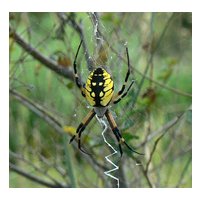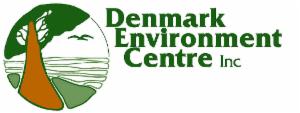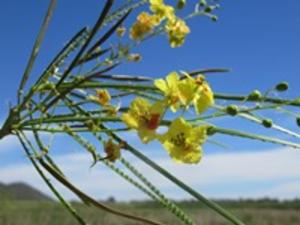Search for Acacia rubida returned 4,094 results.
Refine results
Refine results
Section
- Species (3,743)
- Common Name (198)
- Locality (90)
- Site Page (21)
- Region (19)
- Biodiversity Science project (8)
- Data resource (6)
- Support article (5)
- Data provider (4)
Taxonomic rank
- Species (2,652)
- Variety (690)
- Subspecies (257)
- Unranked (75)
- Form (42)
- Infraspecific Name (15)
- Genus (6)
- infragenus (3)
- Subvariety (2)
Image available
- Yes (1,170)
Lifeforms
- Insects and Spiders (62)
- Fungi (26)
- Crustaceans (7)
- Molluscs (1)
Taxonomic status
- Accepted (1,543)
- Heteroptypic Synonym (1,084)
- Homotypic Synonym (406)
- Misapplied (256)
- Synonym (207)
- unreviewed (173)
- Pro-parte Synonym (31)
- unreviewedSynonym (29)
- Miscellaneous Literature (12)
- Inferred Accepted (1)
Conservation status in Australia
- Vulnerable (38)
- Endangered (33)
- Critically Endangered (7)
- Extinct (2)
Conservation status in NSW
- Vulnerable (15)
- Endangered (14)
- Critically Endangered (1)
Conservation status in QLD
- Vulnerable (23)
- Near Threatened (10)
- Endangered (6)
- Critically Endangered (3)
Conservation status in VIC
- Critically Endangered (24)
- Endangered (23)
- Vulnerable (13)
- Extinct (1)
Conservation status in TAS
- Rare (4)
- Vulnerable (1)
Conservation status in SA
- Rare (30)
- Endangered (10)
- Vulnerable (6)
Conservation status in WA
- Priority 3: Poorly-known species (81)
- Priority 1: Poorly-known species (78)
- Priority 2: Poorly-known species (52)
- Priority 4: Rare, Near Threatened (21)
- Critically Endangered (15)
- Vulnerable (11)
- Endangered (8)
- Extinct (1)
Conservation status in NT
- Vulnerable (3)
- Critically Endangered (1)
- Endangered (1)
-
variety: Acacia aneura var. conifera (misapplied to Acacia aneura)
- Record a sighting
- Misapplied
-
Site Page: New to the Atlas: PhyloLink Phylogenetic tool released – Atlas of Living Australia
Posted on 22nd April 2015 The Atlas of Living Australia (ALA) has released PhyloLink – a new tool for visualising phylogenetic trees and exploring data from phylogenetic perspectives. At the core of PhyloLink is the ability to intersect a phylogenetic tree with species occurrence records, environmental data and character information, resulting in the ability to generate flexible and customisable visualisations, profiles and metrics for biodiversity...
-
subspecies: Acacia julifera subsp. curvinervia () x Acacia julifera subsp. julifera
-
unranked: Sphaerococcus acaciae melaleucae - miscellaneous literature
- Record a sighting
- Miscellaneous Literature
-
Site Page: COMING SOON: New Phylogenetic ‘Tree of Life’ Tools – Atlas of Living Australia
Posted on 26th February 2015 The Atlas of Living Australia (ALA), in collaboration with the creators of PhyloJIVE, will soon be introducing new tools to explore species data and relationships from a phylogenetic (or tree of life) perspective. The tools are intended for both novices and experts alike, and aim to make phylogenetic approaches to data exploration and visualisation accessible to a broad range of audiences...
-
Site Page: Tree of Trees launch – Atlas of Living Australia
Posted on 6th September 2010 The Atlas of Living Australia is one of the proud sponsors of the Acacia Tree of Trees exhibit held at the “old nursery” site in the Australian National Botanic Gardens, Canberra. By Robyn Lawrence, Atlas of Living Australia The Atlas of Living Australia is one of the proud sponsors of the Acacia Tree of Trees exhibit held at the “old nursery” site in the Australian National Botanic Gardens, Canberra...
-
Site Page: ANBG 40th Birthday Celebrations – Atlas of Living Australia
Posted on 25th October 2010 Images from the Australian National Botanic Gardens (ANBG) 40th Birthday Gardens Party Close up of two stick insects Families looking at the stick insects and the display Visitors walking the Acacia tree of trees Visitors walking the Acacia tree of trees Kids looking at the stick insect Annette showing visitors the stick insect Annette showing kids the stick insect Annette holding the stick insect Looking at the postcard & holding the stick insect Father and Son...
-
Biodiversity Science project: Eek of Ecology
It’s time once again for fall science fun with Eek of Ecology! Meet the Eeek!-y creatures and ghouls of National Park sites across the US, at Schoodic Institute in Acadia National Park! You’ll find bats, spiders, creepy crawlies, art, games, and more to entertain and educate! A costume contest will be held for children 12 and under. Prizes for the best National Park–themed costume will be awarded...

-
Biodiversity Science project: Working Wonders on Weeds - Community of Denmark W.A.
The targeted weeds are: * Sydney Golden Wattle (Acacia longifolia), * Arum Lily (Zantedeschia aethiopica), and * Blackberry (Two species: Rubus anglocandicans & Rubus laudatus) Check the Resources section for photos and information on identification and treatment options for each of the target weeds.

-
Biodiversity Science project: Parkinsonia biocontrol
Parkinsonia aculeata Parkinsonia Tree shape - shrub or small tree up to 10 metres high, usually 2-8 metres: Flowers - fragrant, five-petalled, predominantly yellow with orange spots on one petal which can turn completely orange. Each flower grows on a long, slender, drooping stalk: Pods/Seeds - straight, straw-coloured pods, 5−10 cm long, no hairs, constricted between the seeds. Seeds are oval and hard: Leaves - long, flattened leaf stalk with tiny oblong leaflets spaced along each side...
